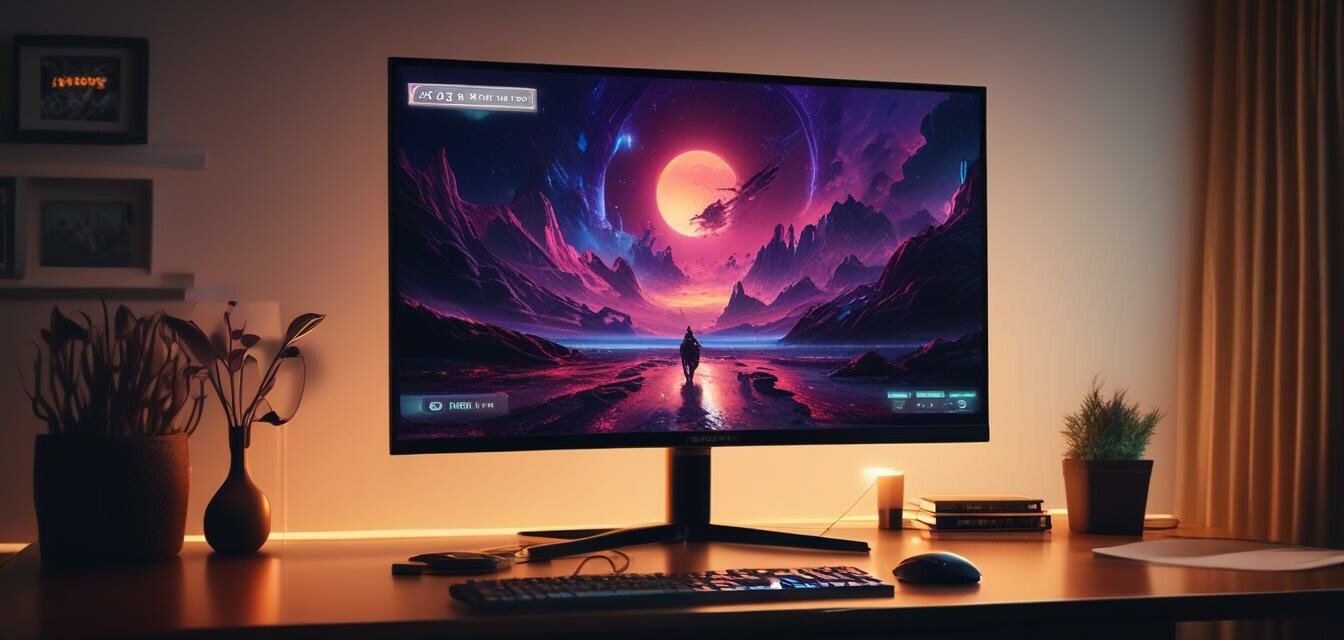
Essential Calibration Tips for Your OLED Monitor
Key Takeaways
- Calibrating your OLED monitor can greatly enhance picture quality.
- Essential settings include brightness, contrast, saturation, and color balance.
- Utilizing calibration tools can provide more precise adjustments.
- Regular calibration is recommended to maintain optimal performance.
- Consider your personal preferences and gaming environment in adjustments.
Calibrating your OLED gaming monitor is crucial for achieving the best picture quality and performance. Whether you're battling it out in a competitive eSports match or immersing yourself in a graphic-heavy adventure, optimal visuals can enhance your gaming experience. In this guide, we'll walk you through essential calibration tips that will help you unlock the full potential of your OLED monitor.
Why Calibration is Important
Calibration ensures that your OLED monitor displays accurate colors and contrasts. It affects everything from your gaming experience to image quality while watching movies. Properly calibrated settings can help:
- Improve color accuracy
- Enhance contrast and brightness levels
- Reduce eye strain during long gaming sessions
- Maximize the lifespan of your display
Basic Calibration Steps
Here are the essential steps to calibrate your OLED monitor effectively:
-
Adjust Brightness:
Start with your monitor's brightness setting. Aim for a level that feels comfortable without overwhelming your eyes in dark environments.
-
Modify Contrast:
Set the contrast level to balance both light and dark areas to ensure rich detail in shadows and highlights.
-
Color Saturation:
Adjust color saturation to make colors pop without being too overwhelming. Calibrating this setting can enhance realism in games.
-
Color Balance:
Ensure that R, G, B (red, green, blue) levels are balanced. This will provide true-to-life colors in all your media.
Utilizing Calibration Tools
For those looking for more precision, using calibration tools can significantly help:
- Hardware Calibration Tools: Devices that connect to your monitor and provide detailed analysis for adjustments.
- Software Calibration Tools: Programs that guide you through the calibration process on your computer.
For a more in-depth understanding of enhancing your monitor's performance, check out our product comparisons section for different calibration tools available in the market.
Advanced Calibration Techniques
Once you've mastered the basics, consider diving deeper with these advanced techniques:
Tips for Advanced Calibration
- Use a colorimeter for precise measurement of color settings.
- Adjust gamma settings for better detail in shadows.
- Try different presets and see what fits your gaming style.
Regular Calibration
Over time, your monitor's picture quality may degrade due to changes in lighting conditions or usage. Here's how to stay on top of your calibration:
- Calibrate every few months or after significant changes in lighting.
- Keep your OLED monitor's firmware updated for optimal performance.
- Adjust settings temporarily based on different gaming environments (e.g., daytime vs. nighttime).
Conclusion
Calibrating your OLED gaming monitor is a simple yet effective way to enhance your gaming experience. By understanding the essential settings and utilizing calibration tools, you can achieve stunning visuals that bring your games to life. Don't forget to periodically recalibrate to ensure your monitor continues to perform at its best.
For more insightful guides on purchasing and maintaining an OLED gaming monitor, head over to our Buying Guides.
Pros
- Bright, vibrant colors that enhance gaming visuals.
- High contrast ratios for deep blacks and bright whites.
- Improves overall gaming experience with better graphics.
Cons
- Calibration can take time and patience.
- Advanced tools may involve additional costs.
- Improper calibration might lead to undesirable visual results.